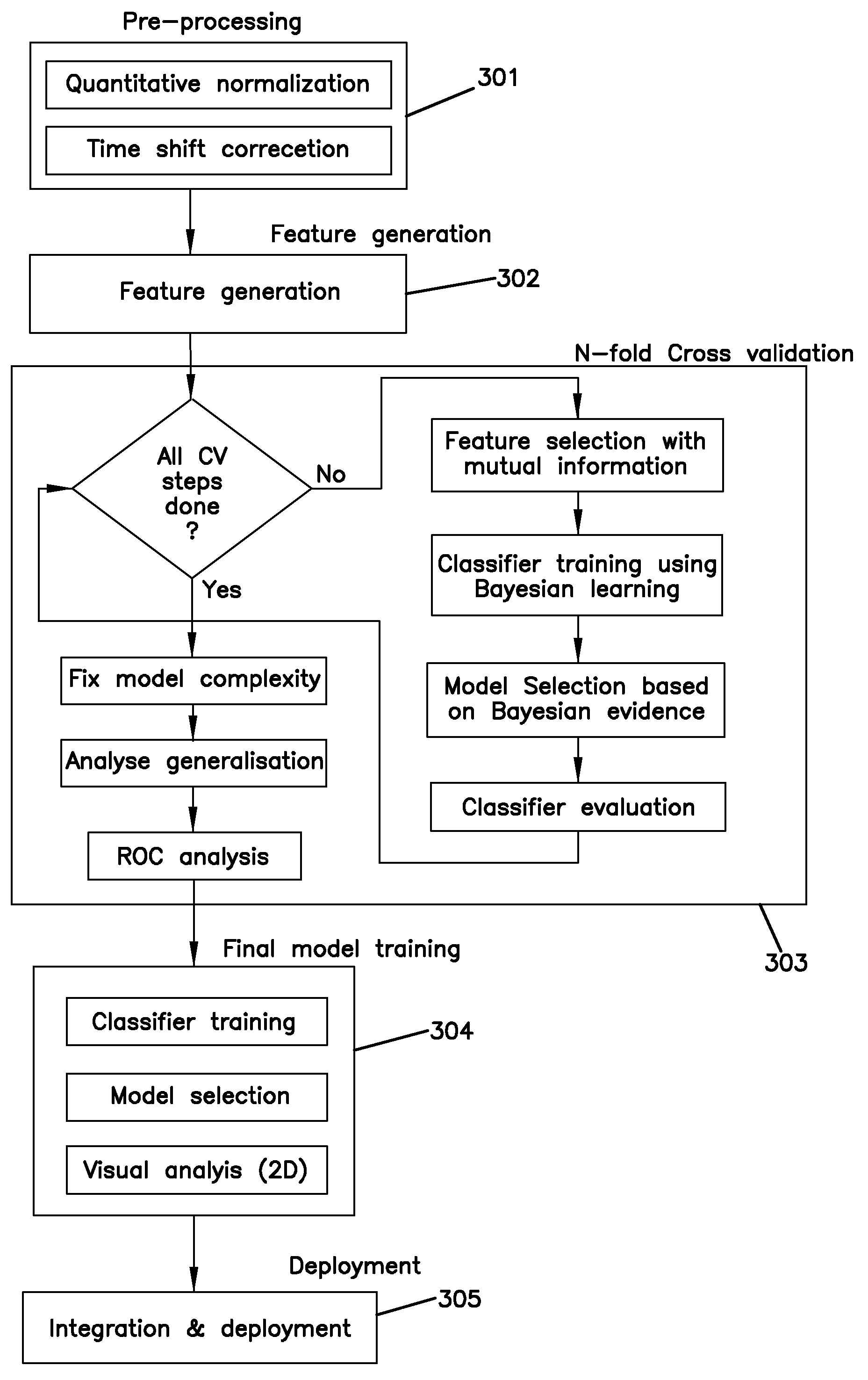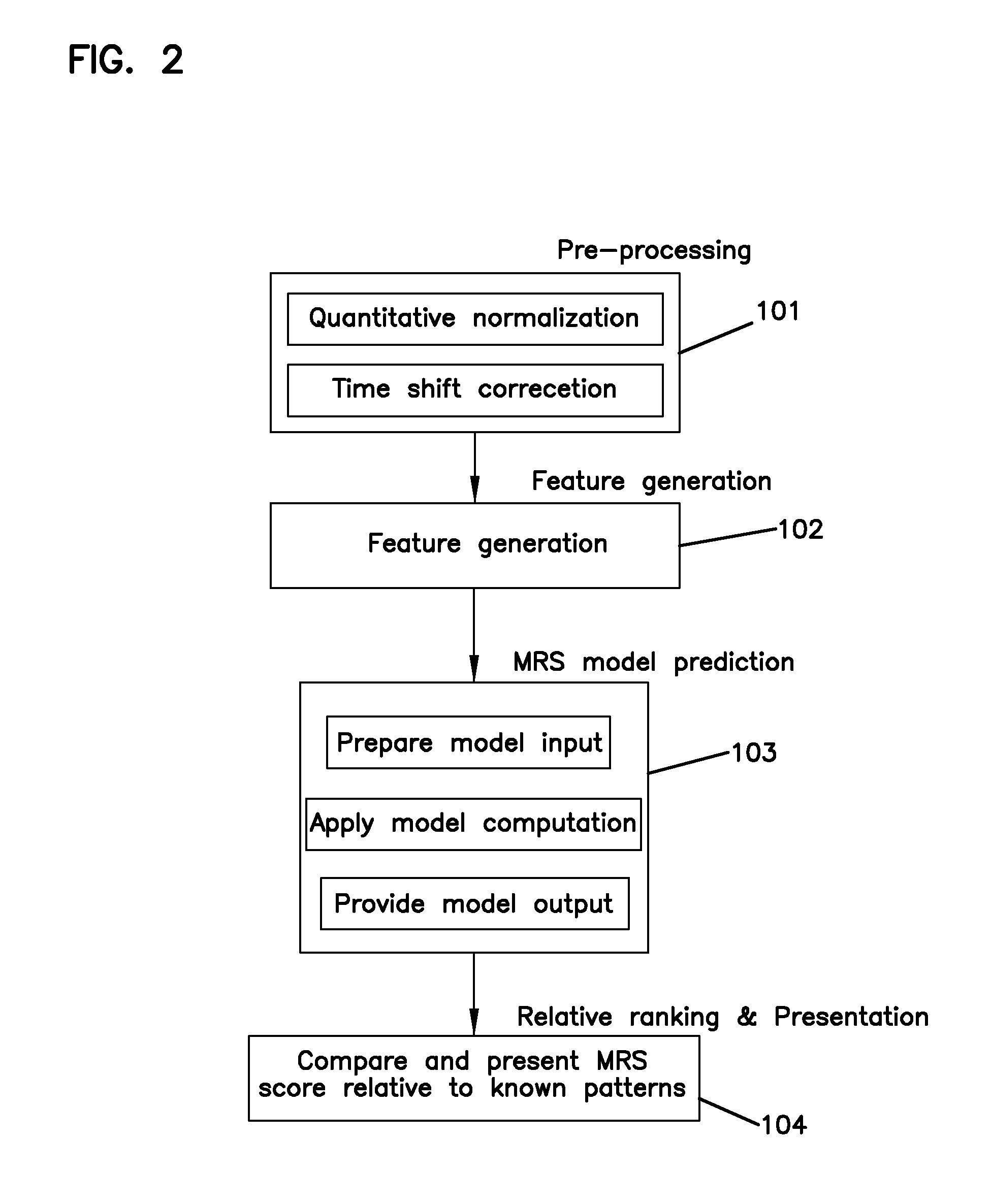Methods and Devices for Analyzing Lipoproteins
a lipoprotein and analysis method technology, applied in the field of methods and devices for analyzing lipoproteins, can solve the problems of inability to accurately and reproducibly assess the lp(a) level, laborious methods used to detect lipoprotein subclasses, and limited use of methods
- Summary
- Abstract
- Description
- Claims
- Application Information
AI Technical Summary
Benefits of technology
Problems solved by technology
Method used
Image
Examples
example 1
[0144]Lipoprotein Separation and Analysis
[0145]A serum sample contains HDL, LDL, VLDL, and Lp(a). Each of these classes of lipoproteins was separated using electrophoresis. Different classes or subclasses of the lipoproteins can be distinguished based on physical characteristics such as elution times or molecular weight or by differential labeling.
Methods
[0146]Microfluidics Gel Electrophoresis
[0147]All tests were carried out on the Agilent 2100 Bioanalyzer (Agilent, Waldbronn, Germany) using a newly developed HDL sub-fraction assay. In short, a linear polymer solution was used as the separation matrix. Serum samples, Calibrator and QC materials (Solomon Park Research Institute, Kirkland, Wash.), were diluted 1:50 in the presence of a lipophilic fluorescent dye and allowed to incubate for 5 to 15 minutes prior to analysis. Buffer wells of the microfluidics chips (Caliper Life Sciences, Hopkinton, Mass.) were filled with 10 μL of the polymer. The diluted Calibrators and QC materials w...
example 2
[0155]A study was conducted to show the effectiveness and clinical utility of the current assay using samples from the Prospective Cardiovascular Munster (PROCAM) study, one of the world's largest prospective cardiovascular studies. This patient pool provides a source of samples to establish HDL subclasses, as measured on the Agilent 2100 Bioanalyzer, as an independent risk factor for cardiovascular disease.
[0156]Study Design
[0157]The clinical significance of the methodology was tested using a case-control study design that included 251 male MI survivors admitted in the vicinity of Munster, Germany and 252 male controls between the ages of 18 and 65 selected from the PROCAM cohort. Blood samples from MI survivors were taken within six hours after onset of clinical symptoms. For each case, one control sample from the PROCAM study was selected that was matched for age, HDL cholesterol, triglycerides and low-density lipoprotein (LDL) cholesterol. Additional information on body mass ind...
PUM
 Login to View More
Login to View More Abstract
Description
Claims
Application Information
 Login to View More
Login to View More - R&D
- Intellectual Property
- Life Sciences
- Materials
- Tech Scout
- Unparalleled Data Quality
- Higher Quality Content
- 60% Fewer Hallucinations
Browse by: Latest US Patents, China's latest patents, Technical Efficacy Thesaurus, Application Domain, Technology Topic, Popular Technical Reports.
© 2025 PatSnap. All rights reserved.Legal|Privacy policy|Modern Slavery Act Transparency Statement|Sitemap|About US| Contact US: help@patsnap.com



